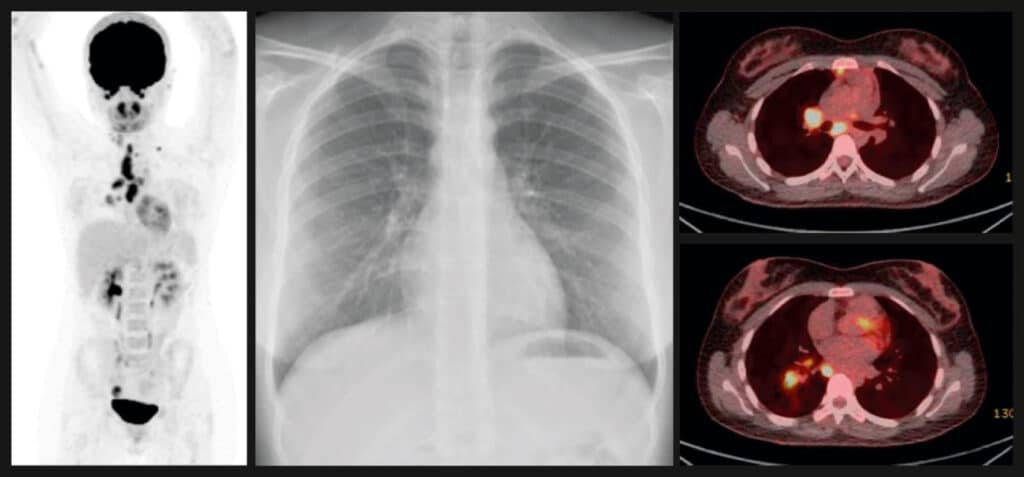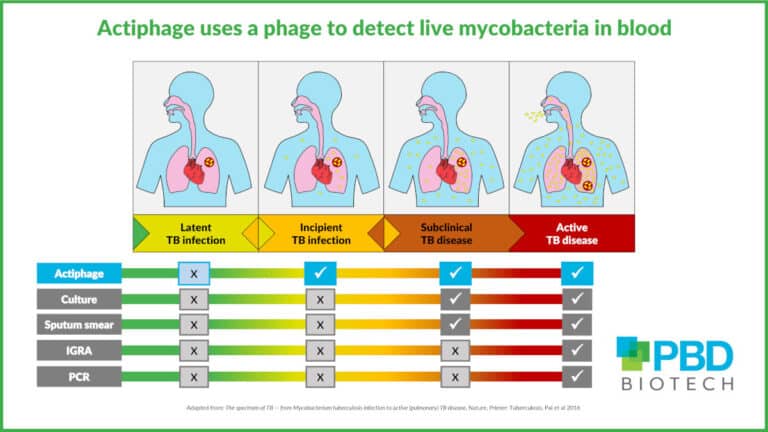Researchers at the National Institute for Health and Care Research (NIHR) Leicester Biomedical Research Centre (BRC) hope the findings of their study, published in the Lancet Microbe on 17 January, could help with global efforts to reduce the spread of the disease.
Dr Pranabashis Haldar, Clinical Senior Lecturer in Respiratory Medicine at the University of Leicester and a Principal Investigator at the NIHR Leicester BRC, where the research was carried out, said: “Tuberculosis rates in the UK and around the world are not declining despite global efforts.
“TB is a bacterial disease that causes significant lung damage and can, without treatment, be fatal. It is spread in aerosol by inhaling droplets containing the bacteria. Most people that become infected live with the infection and remain well; however in a small proportion, the infection is not controlled and can progress to cause disease.”
Current tests cannot identify those at high risk of TB
“Current tests of TB infection use either a skin test or a blood test, called an interferon gamma release assay (IGRA) to detect an immune response to the infection. However, these tests cannot distinguish between those that are at high or low risk of developing TB.
“An important research goal is to develop better tests that can identify the high risk group, so that we can provide more targeted treatment to prevent TB developing.”
In this study researchers used PET-CT, a highly sensitive form of imaging, as a novel way of looking at how the infection progresses, and to identify people at greater risk of developing the disease.
This approach allowed the team to undertake a study evaluating a potential new blood test for identifying those at higher risk, without needing to recruit a large cohort, which can be challenging and very expensive.
Twenty adults traced back to households of people being treated for tuberculosis disease at University Hospitals of Leicester NHS Trust took part.
Participants underwent chest radiography and an IGRA to screen for TB infection. The research team then used two new methods of monitoring the progression of the disease over the following year: PET-CT imaging tools and a new blood test.
PET-CT shows disease progression
Dr Jee Whang Kim, a Clinical Research Fellow from the University of Leicester, who conducted the study said: “In PET-CT scans, patients are given fluorodeoxyglucose (FDG), a radiotracer which is similar to naturally occurring glucose (a type of sugar) that the body uses it in a similar way.
“By analysing the areas where the radiotracer is taken up, it’s possible to identify areas in the body where something might be going on.
“In this case, we were looking for evidence of metabolic activity associated with infection by the TB bacteria that cannot be seen using a chest x-ray or deduced by the blood tests used in routine clinical practice.
“In keeping with what is understood about the natural history of this infection, we found that the radiotracer activity tended to be taken up around the lungs, or in lymph nodes around the lungs. We then went on to perform a second PET-CT scan after 3 months to find out whether the infection was progressing or not. Where possible, we also took samples from the active sites to test for presence of the TB bacteria.”
Phage-based diagnostic identifies new blood biomarker for TB
The second novel test was looking for a new biomarker (a biological change) in the blood of patients with the infection.
“There is evidence of bacterial escape from where the primary infection occurs (the lungs) during progressive infection, and that escape might occur into the bloodstream,” added Dr Jee Whang Kim.
“Until now, studies have been limited by challenges of detecting low bacterial numbers.”
In this study the team used a novel bacteriophage-based assay called Actiphage (developed by PBD Biotech).
Bacteriophages are viruses that infect bacterial cells and they are highly specific; with each phage preying on a single type of bacteria. The Actiphage assay uses a bacteriophage that attacks live TB bacteria; releasing the bacterial DNA which can then be detected. Using this approach, it is possible to detect very low levels of the bacterial DNA that cannot otherwise be detected using existing clinical tools.
“We wanted to see whether this approach could identify metabolically active and replicating M tuberculosis in the blood of individuals who were otherwise completely well,” added Dr Jee Whang Kim.
The 20 TB contacts were all asymptomatic with normal chest X-rays. They underwent a PET-CT baseline scan and, if it was positive and showed metabolic activity that could be sampled, they went on to have a bronchoscopy and sampling. If the baseline PET-CT scan did not show anything that could be sampled or if the sampling was negative for TB, they were monitored with a second PET-CT after three to four months.
Dr Haldar said: “Of the 20 contacts recruited to the study, one had a subtly abnormal chest radiograph that was picked up retrospectively. Using existing clinical tools and criteria, we can conclude that only this person may have been identified at routine contact screening to have—or be at higher risk of developing—tuberculosis.
“But using PET-CT we identified four people in whom the TB bacteria could be isolated from either the lung airway or PET-positive lymph nodes and two further people that had progressive changes after the second PET-CT scan. All six individuals were given TB treatment and in all of them, a further PET-CT scan 3 months after completing treatment showed resolving or completely resolved changes, further supporting our view that the PET-CT changes were caused by metabolically active tuberculosis infection.”
“We were also encouraged by the result of the Actiphage test,” added Dr Haldar. “We found a statistically significant association between a positive baseline Actiphage test and later being given treatment for high risk features of TB infection.
“Overall, Actiphage results were positive in 12 (60%) participants at baseline and positive in all six of the treated PET-CT- positive participants.“
New findings
“Our results are exciting for two reasons”, Dr Haldar continues.
“Firstly, they show that PET-CT could be an effective tool for identifying people with higher risk TB infection. This can help us to perform studies to develop new tests and evaluate new treatments, including vaccines more efficiently and at lower cost.
“Secondly, our findings suggest that TB bacteria are found in blood more often than has previously been thought and importantly, the presence of the bacteria in blood may be an indicator of uncontrolled or progressive TB infection.
“Based on our findings we propose that blood biomarkers aimed at detecting the bacteria, can complement existing biomarkers of the host immune response to enable better stratification of TB risk in those that have TB infection.”
For the full paper, please visit: PET-CT-guided characterisation of progressive, preclinical tuberculosis infection and its association with low-level circulating Mycobacterium tuberculosis DNA in household contacts in Leicester, UK: a prospective cohort study – The Lancet Microbe
The NIHR Leicester Biomedical Research Centre
The National Institute for Health and Care Research (NIHR) Leicester Biomedical Research Centre (BRC) is part of the NIHR and hosted by the University Hospitals of Leicester NHS Trust in partnership with the University of Leicester, Loughborough University and the University Hospitals of Northamptonshire NHS Group.
The NIHR Leicester BRC undertakes translational clinical research in priority areas of high disease burden and clinical need. These are:
• Respiratory and infection
• Personalised cancer prevention and treatment
• Lifestyle (including diabetes)
• Environment and health
• Data innovation for multiple long term health conditions and ethnic health
• Cardiovascular disease
Image: Baseline PET-CT features observed following M tuberculosis exposure: Representative example of positive scans (maximum intensity projection PET images [left] and fused axial PET-CT images [right]) with corresponding chest radiographs (middle). All chest radiographs shown were reported as normal by a consultant thoracic radiologist. Image from https://doi.org/10.1016/S2666-5247(23)00289-6






